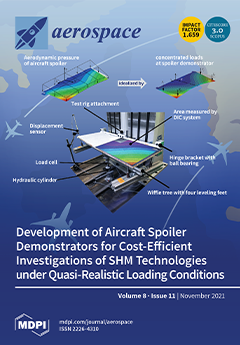Degradation of compressors is a common concern for operators of gas turbine engines (GTEs). Surface roughness, due to erosion or fouling, is considered one of the major factors of the degradation phenomenon in compressors that can negatively affect the designed pressure rise, efficiency,
[...] Read more.
Degradation of compressors is a common concern for operators of gas turbine engines (GTEs). Surface roughness, due to erosion or fouling, is considered one of the major factors of the degradation phenomenon in compressors that can negatively affect the designed pressure rise, efficiency, and, therefore, the engine aero/thermodynamic performance. The understanding of the aerodynamic implications of varying the blade surface roughness plays a significant role in establishing the magnitude of performance degradation. The present work investigates the implications due to the degradation of the compressor caused by the operation in eroding environments on the gas turbine cycle performance linking, thereby, the compressor aerodynamics with a thermodynamic cycle. At the core of the present study is the numerical assessment of the effect of surface roughness on compressor performance employing the Computational Fluid Dynamics (CFD) tools. The research engine test case employed in the study comprised a fan, bypass, and two stages of the low pressure compressor (booster). Three operating conditions on the 100% speed-line, including the design point, were investigated. Five roughness cases, in addition to the smooth case, with equivalent sand-grain roughness (
) of 15, 30, 45, 60, and 150 µm were simulated. Turbomatch the Cranfield in-house gas turbine performance simulation software, was employed to model the degraded engine performance. The study showed that the increase in the uniform roughness is associated with sizable drops in efficiency, booster pressure ratio (PR), non-dimensional mass flow (NDMF), and overall engine pressure ratio (EPR) together with rises in turbine entry temperature (TET) and specific fuel consumption (SFC). The performance degradation evaluation employed variables such as isentropic efficiency (
), low pressure compressor (LPC) PR, NDMF, TET, SFC, andEPR. The variation in these quantities showed, for the maximum blade surface degradation case, drops of 7.68%, 2.62% and 3.53%, rises of 1.14% and 0.69%, and a drop of 0.86%, respectively.
Full article





